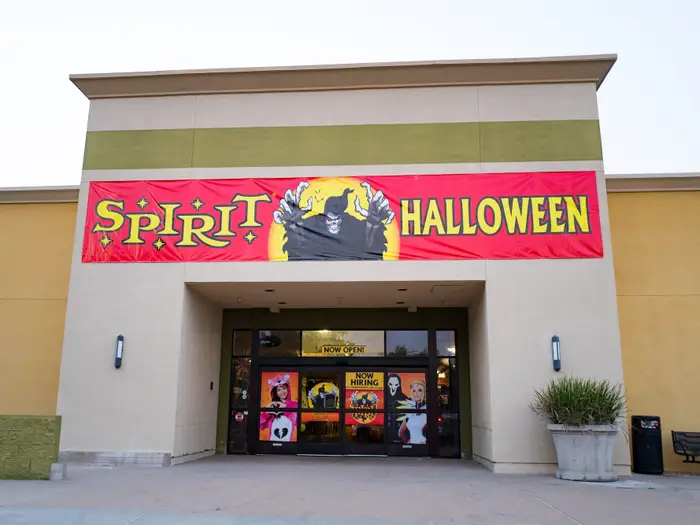Death, Taxes, and Spirit Halloween
Spirit Halloween is a bit of an oddity. It seems like every time some business closes down, they’re always there to buy the building and set up shop. A burger place shuts down? Bam. Spirit Halloween. A local Mom & Pop department store closes? Bam. Spirit Halloween. The U.S. pulls out of Afghanistan? Bam. Spirit Halloween.
Regardless of its odd existence as a slightly bigger farmer’s market stall that only shows up a maximum of three months per year, it obviously works: the Halloween industry is quite lucrative, bringing in $10.14 billion just last year. Of this amount, $3.6 billion was spent on costumes, with the rest going to things like candy and those giant and obnoxious inflatables or those stupid and ugly fake spiders. Of that $3.6 billion, a whopping $1.1 billion went through just Spirit Halloween, meaning that about one in every ten dollars spent relating to the ultimate culmination of the spoopy season went through just one store. But how does Spirit Halloween manage this feat? What things do the managers think about before leasing a property? Most importantly, how much money is spent on coloring the entire interior black?
In order to fully understand the Halloween brand with inarguably the best logo, it’s best to examine their roots. The first Spirit Halloween opened in Castro Valley Mall in San Francisco, California in 1983. It was an extension of a women’s clothing store owned by Joe Marver, the original owner. In 1999, Marver sold the company to Spencer Gifts, which is kind of an odd choice for buying a Halloween-themed store—but that’s how it’s been, as it still owns Spirit Halloween. Since then, Spirit Halloween has expanded to 1,450 stores.
Spirit Halloween tries to maximize cost efficiency by purchasing pop-up leases: that way, they’re only paying for space when they know that they can make a positive return on their investment. Initially, commercial landlords didn’t really think that leasing their property to Spirit Halloween was a good idea. Eventually, though, they grew a few brain cells and realized that some income is better than no income. This led to Spirit Halloween(s) popping up all around both the U.S. and Canada. Each time a store opens, a lot of time and effort goes into setting the whole place up with decor, fixtures, the merchandise itself, etc. (This does, again, include coloring almost everything black.) This work does pay off though: each customer spends an average of $100 on costumes, Halloween cards (why people who buy these don’t just wait a couple months and just send a Christmas card, we may never know), and décor. Of those customers, 36% said that they were going to shop at a specialty store, i.e., Spirit Halloween. This leads to massive profits, which leads to more leases, which leads to more profits, and so on and so forth.
All in all, Spirit Halloween is much more than just some random shop that shows up with pictures in the windows of a person dressed up as Pennywise from Stephen King’s It (terrible book, even worse movie, would not recommend) right next to someone dressed as Ted Lasso from the series Ted Lasso (pretty good, based on the fact that it has seven awards, four of which are Emmys). Unfortunately, though, to everyone’s pure dismay, they don’t have an official theme song. However, they do have an unofficial theme song written and sung by some dude on Twitter, which doesn’t sound like it would be very good just based off of that, but it’s better than most songs on the radio currently—which, admittedly, isn’t a very high bar to set. A brief warning to those who would like to hear it: you will get it stuck in your head. No matter how hard you try to get it out, it will stay stuck in your head, and you will be forced to listen to a five-second segment of the chorus forevermore . . . . or at least until you listen to something else.
[Ed. Note—you had to know we were going to post it, right?]
